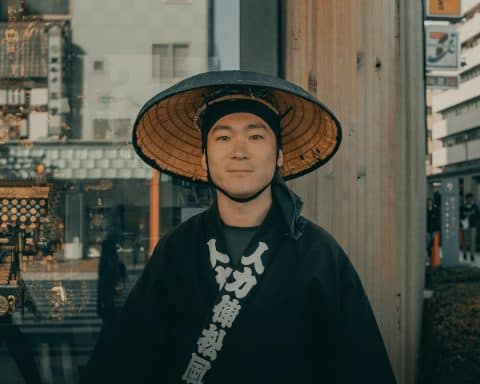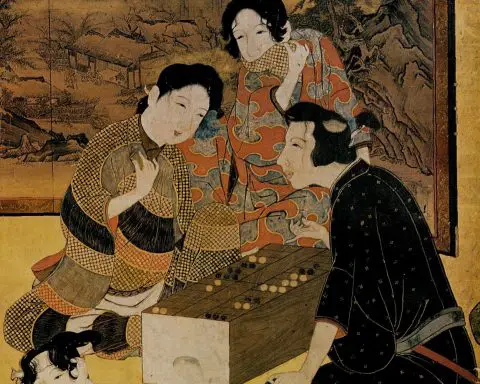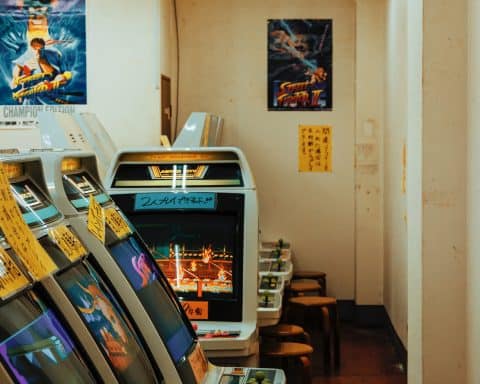Pretty much anyone I’ve ever met that hasn’t spent a prolonged period of time in Japan has a certain view of the country. Normally, that comes under ‘crazy’, ‘wacky’, and weird. But why is Japan perceived as weird?
Many people consider Japan to be ‘weird’ due to the country’s apparent obsession with pop culture, a large mix of modern and traditional cultural norms, and different ways of life. Does that really make Japan weird? Not entirely. The media plays a big role in hyping up the image of ‘Crazy Japan’ whereas, in reality, it’s just different from what a lot of people are used to.
I live here now, and while I wouldn’t say it’s a ‘weird’ country, there are certainly a lot of things that still surprise me, or seem very different from what I’ve seen before. Let’s talk about what makes this country so unique, and some of the common misconceptions people have about ‘weird’ Japan.
Historical and Cultural Context

When it comes to understanding why Japan is often perceived as being weird, the cultural influences of traditional Japan are hard to ignore. I’ve dedicated an entire section of this site to that very subject, so it’s definitely something we need to discuss here to answer the question “Why is Japan perceived as weird?”.
In the past, Japan had an extremely strict code of social hierarchy known as the caste system. Basically (very basically…), this system divided people based on their jobs and therefore their rank in society.
This code of etiquette also dictated how people should dress, behave, and even speak to one another. While this system has long since been abolished (1871), the customs associated with it still somewhat linger today.
Despite modernization, the Japanese people still hold on to their traditional values and customs, which have been carefully preserved over the centuries.
For instance, the traditional tea ceremony known as ‘chanoyu’ remains popular among the Japanese people, and the practice of wearing kimono is still widely practiced in Japan. I did that on my recent trip to Gion ^_^
These types of cultural influences have helped create a unique image of Japan that we don’t see anywhere else in the world. Maybe not ‘weird’ as such, but definitely different from what many people in the West are used to.
Japanese traditions & customs still around today:
- Hanami: Flower viewing (Specifically, cherry blossom)
- Onsen: Bathing in a natural hot spring
- Matsuri: Festivals held at various times throughout the year based on…
- Kabuki Theater: Classical Japanese theater
- Ikebana: Flower arranging
- Caligraphy: Artistic writing
- Zen Gardens: Japanese garden intended to imitate nature
- Bowing: Used for many social reasons
- Hatsumōde: The first visit of a shrine or temple in the new year
- Removing shoes: Keeping their home clean
While these are all Japanese traditions, some exist elsewhere under different names and variations.
Modern Pop Culture Phenomena

Perhaps one of the main reasons people associate Japan with being weird is the modern pop culture, something that’s prevalent throughout the country. Take this massive cat billboard in Shibuya for example.
There are loads of digital billboards around the world, but for some reason, this one seems to have done the rounds on Instagram. Maybe because it’s just… different?
Oh, and yes that is a cat cafe on the right-hand side…
The Anime Effect

Cosplay and Manga have always been popular, and they have no doubt contributed to the perception of Japan as being weird.
In fact, this is such a big part of Japan’s identity (according to the ‘outside’ world), that I went to a Japan festival in London a few years ago that was packed full of all these things. There were cosplay contests, manga drawing stations, and more anime merchandise than anywhere I’ve seen before.

While some may view cosplay and manga as strange, it’s important to look at what these cultural phenomena represent. They serve as a way for people to express their creativity and individuality while also providing an escape from the mundane aspects of daily life.
In this sense, and especially in Japan, they can be seen as a form of self-expression and creativity, rather than simply being ‘weird’.
Kawaii Culture

Kawaii culture is another major factor that contributes to the perception of Japan as being weird. Kawaii refers to the Japanese concept of cuteness and its prevalence in popular culture.
From Hello Kitty to Pokémon, “Kawaii” has become a ubiquitous part of modern Japanese life despite seeming unusual to those who simply take a trip over here.
This style of cuteness may be strange for non-Japanese people, but it is an important part of Japanese culture that has been around since the 1960s.
Despite what you may initially think, Kawaii items such as stuffed animals, plushies, and other cute things are popular among all age groups in Japan. Even business cards and stationery feature adorable designs to convey a feeling of friendliness.
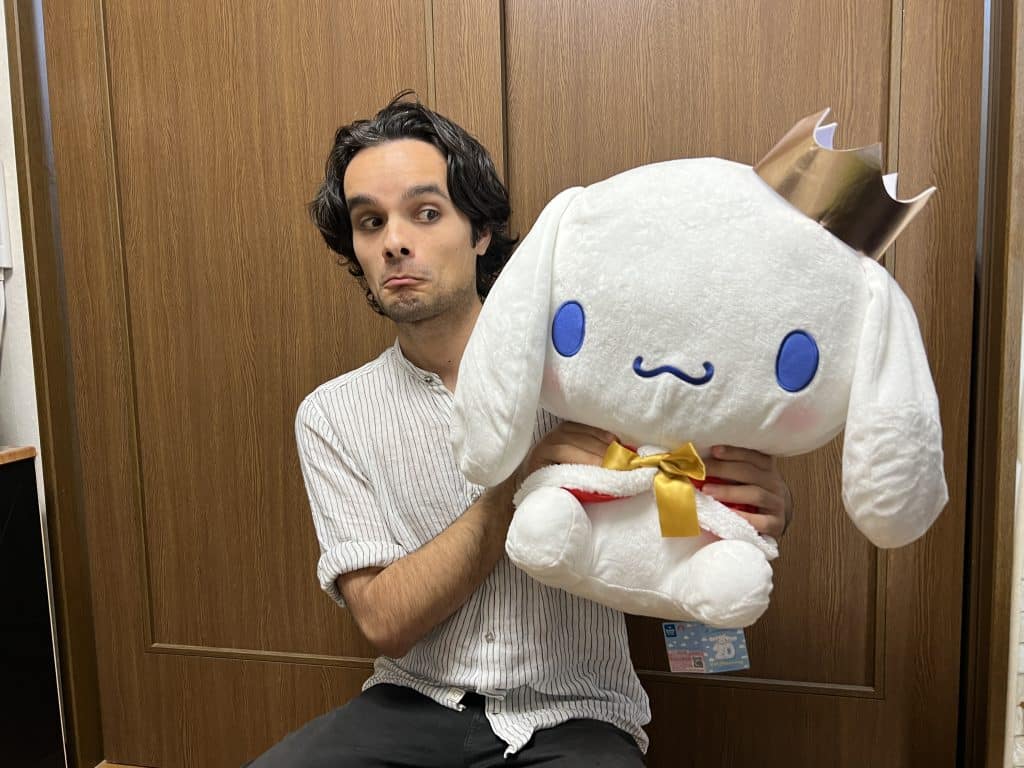
If you happen to go to any arcade during your trip to Japan, I’ll bet you anything that you’ll see people of all ages and demographics having fun and trying to win cute toys. In fact, I actually managed to win a giant cinnamon roll the other day! ^_^
Social Norms and Etiquette
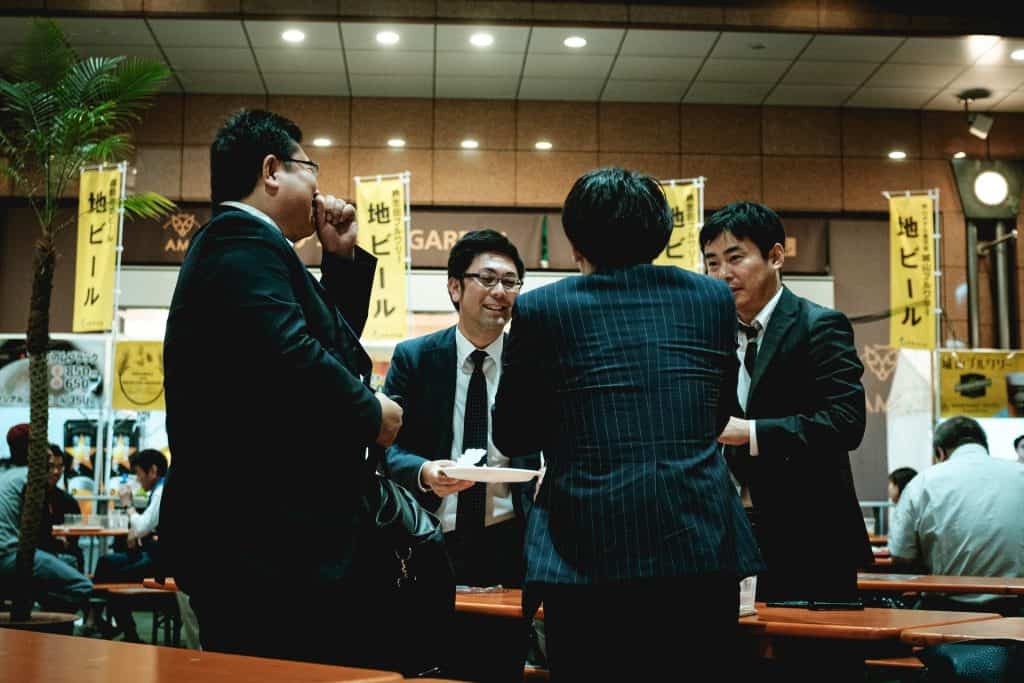
Another area of culture that makes Japan seem weird for a lot of people is the social norms and expected etiquette in certain situations. From bowing instead of shaking hands to taking off your shoes when entering someone’s house, there are a lot of customs that may feel different from what you’re used to.
You might not notice all of these on your trip to Japan, but the chances are high that you’ll notice a few. Especially the next one on this list!
Politeness
If you’ve ever heard one sweeping statement about Japanese people, or experienced it for yourself, I imagine it’s probably this one. For the most part, Japanese people are well-known for their politeness.
For example, bowing is a way of greeting and also a way of showing respect to someone else.
This can range from a shallow bow to a deep 90-degree angle, conveying the utmost respect and politeness. The latter of which is used only in certain situations, none of which you’re likely to come across in your short time in Japan unless you mess up big time!
Another custom that may seem strange is taking your shoes off when entering another person’s home or certain establishments (traditional restaurants etc). This is done out of respect for the owner so the house is kept clean (usually the shoes are left in a Genkan, like the one below).
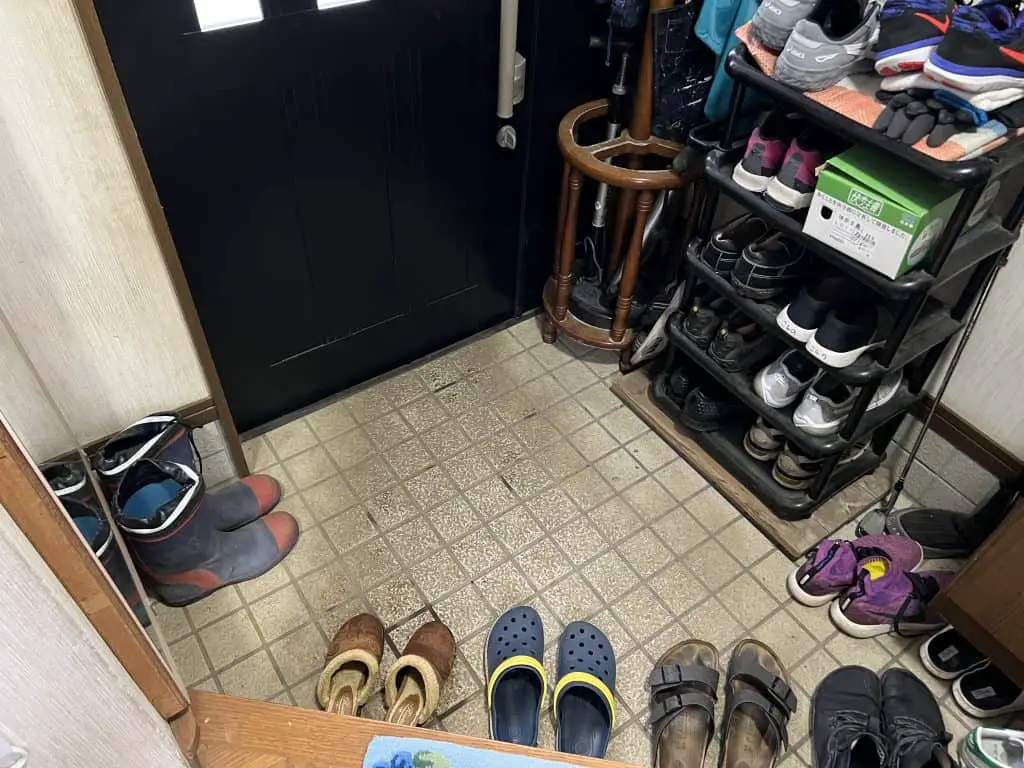
It’s not necessarily weird – it’s just different from what you may be used to. And if you take the time to explore and learn more about Japan, you’ll discover the charm and uniqueness that makes this country so special.
Group Harmony
Another important part of Japanese culture is the concept of ‘Wa’, or group harmony. It’s likely the one on this list you’ll come face to face with during your trip multiple times without even knowing it.
This idea emphasizes the importance of collective behavior and avoiding conflict. As a result, individuals put aside their own desires in favor of maintaining social order and peace.
For instance, I’ve been on the train during some of the busiest rush hours in Tokyo (seriously, just look at the picture below…) and there’s barely any sound whatsoever. Couple that with absolutely no trash being left behind of any kind, and you’ll begin to understand that the Japanese concept of ‘Wa’ doesn’t make Japan weird, it makes it undeniably special.
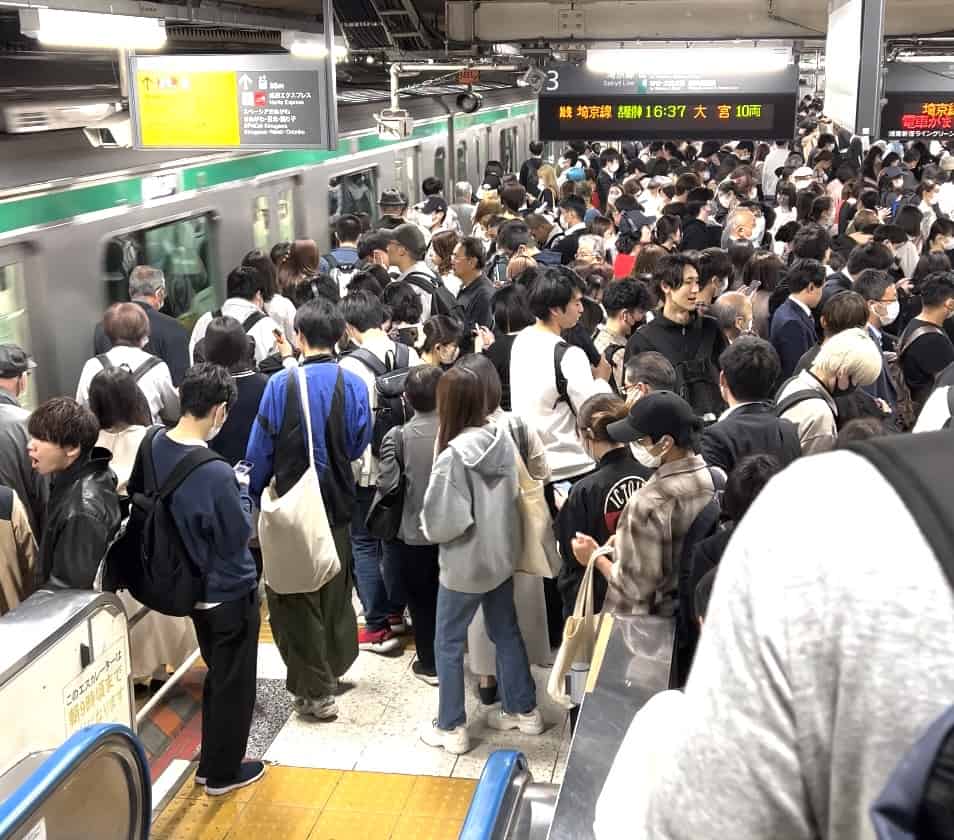
Formalities
I briefly mentioned formalities and unwritten codes of etiquette above, and it’s something worth going over because of how influenced Japan’s society is regarding these concepts. It’s a little hard to notice if you’re just coming on vacation to Japan, but when you’ve lived here for as long as I have, things start to become more clear.
From the way people speak and dress to how they conduct business, these ‘protocols’ make sure that all interactions are conducted with respect and dignity.
Here are 5 unwritten Japanese cultural norms and practices that almost everyone in Japan abides by:
- Queuing: Being brought up in Britain, I thought we were the absolute best at queueing, turns out I was wrong… Forming orderly lines and waiting patiently is highly valued (and respected) in Japan. Whether it’s for public transportation, entering a store, or buying tickets, people are more than happy to form a line.
- Respect for Elders: Respect for older individuals is deeply ingrained in Japanese culture. Polite language forms (Keigo) and specific gestures are often used when interacting with seniors or authority figures.
- Gift Giving: Giving and receiving gifts is common in Japan and is often seen as an important social gesture. There are also specific customs and etiquette surrounding gift-giving, such as presenting gifts with both hands, not opening them immediately, and using appropriate wrapping. I’ve done this many times since living here, though it’s never been a really formal thing.
- Personal Space and Physical Contact: Japanese culture places huge importance on personal space. People generally avoid physical contact, such as hugging or touching others unless they have a close relationship or it’s deemed appropriate in specific situations.
- Silence: Maintaining a calm and collected demeanor is very common in Japanese society. People tend to speak softly and avoid causing disruptions or drawing unnecessary attention to themselves in public spaces. Exactly like the train situation I just talked about, people just really don’t like standing out if they don’t need to.
These are just a few examples, but they all come back to the Japanese concept of group harmony.
Unique Subcultures
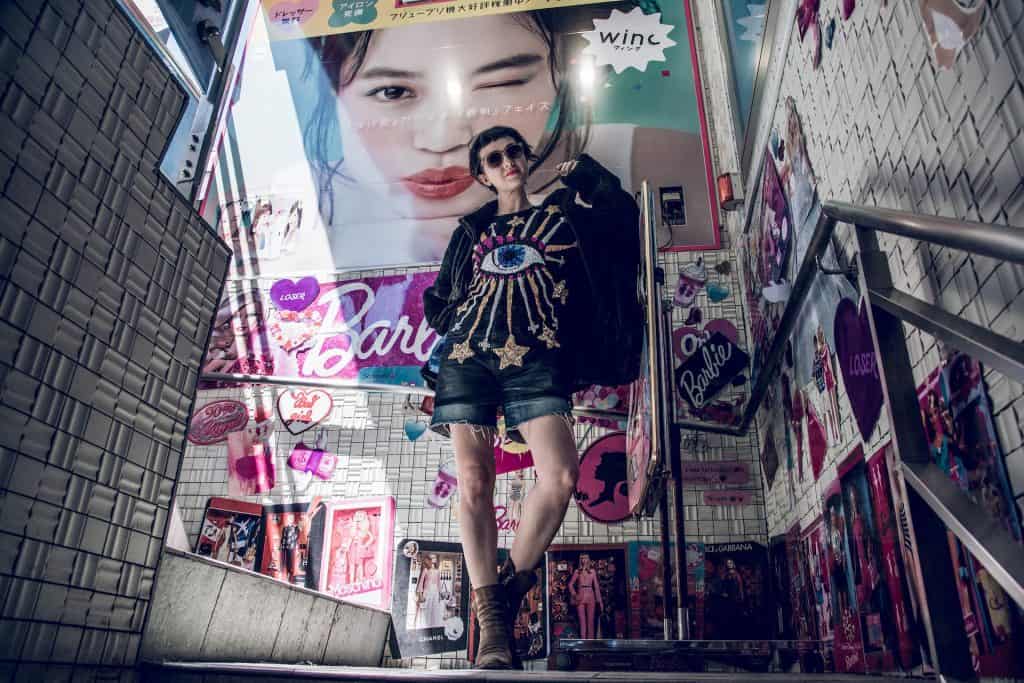
Let’s get this straight right at the start, not everyone in Japan wears crazy and weird clothing (yes I’ve genuinely been asked that before), and not everyone in Harajuku does either.
As I’m sure is the case in the US or wherever you’re reading this from, people wear clothes as a form of expression and freedom.
It just so happens that Japan is pretty great about expressing itself when it wants to! That often comes in the form of Subcultures.
A World of Subcultures
From cosplay to visual kei, these ‘underground’ movements offer an alternative way of life for those looking to express themselves in a creative and unique way. They’re sometimes classified only by their fashion, but not always.
And while it may seem strange to some, these alternative lifestyles should often be seen as a form of liberation for those looking to break away from the mundane traditions or societal norms of Japan where you’re just expected to fit in and nothing more.
10 Japanese subcultures you should know about:
- Gothic: A subculture that embraces dark aesthetics, inspired by Gothic literature, fashion, and music. Massive nostalgia for me right there…
- Otaku culture: A subculture of passionate enthusiasts, often associated with anime, manga, and video games. Annnnd I’ve found my people…
- Visual kei: A music and fashion subculture characterized by flamboyant and theatrical styles, often featuring elaborate hairstyles and makeup.
- Gyaru fashion: A fashion subculture where women normally have bleached hair, loads of makeup, tanned skin, “loud” clothing, and big hair.
- Lolita fashion: Inspired by Victorian and Rococo styles, characterized by modest and doll-like outfits with frills, lace, and bows.
- Cosplay: The practice of dressing up as characters from anime, manga, video games, or other things in pop culture.
- Yankii: A rebellious subculture associated with delinquent behavior, usually on motorcycles.
- Bōsōzoku: Motorcycle gangs that are most well-known for their customized motorcycles. Less troublesome than they were many years ago
- Decora fashion: A fashion subculture characterized by colorful and excessive layering of accessories, including bright hair accessories, jewelry, and clothing. Inspired by cartoon characters from the 80s. Type this one into Google, I dare you!
- Mori kei fashion: Inspired by nature and the forest, characterized by loose and layered outfits, earthy tones, and natural accessories. Love this!
Street Fashion

Ok so YES, I have used a stock photo for Harajuku, but only because I refuse to visit the place. It’s got so unbelievably busy that I honestly can’t bring myself to visit even though I live about 30 minutes from Tokyo!
Anyway!
Though there’s a little bit of an overlap with the above, street fashion is both a defining and ever-changing aspect of Japanese culture.
Harajuku is still technically at the center of this, though its overpopulation of tourists has started to become a problem. I would hazard a guess that the locals who used to go there to show off their outfits have packed up and decided to hang out somewhere else instead.
I’m unsure if that alone is enough to make someone consider Japan as ‘weird’ but the streets are certainly more colorful than somewhere like London was.
Quirky Cafes and Themed Spaces
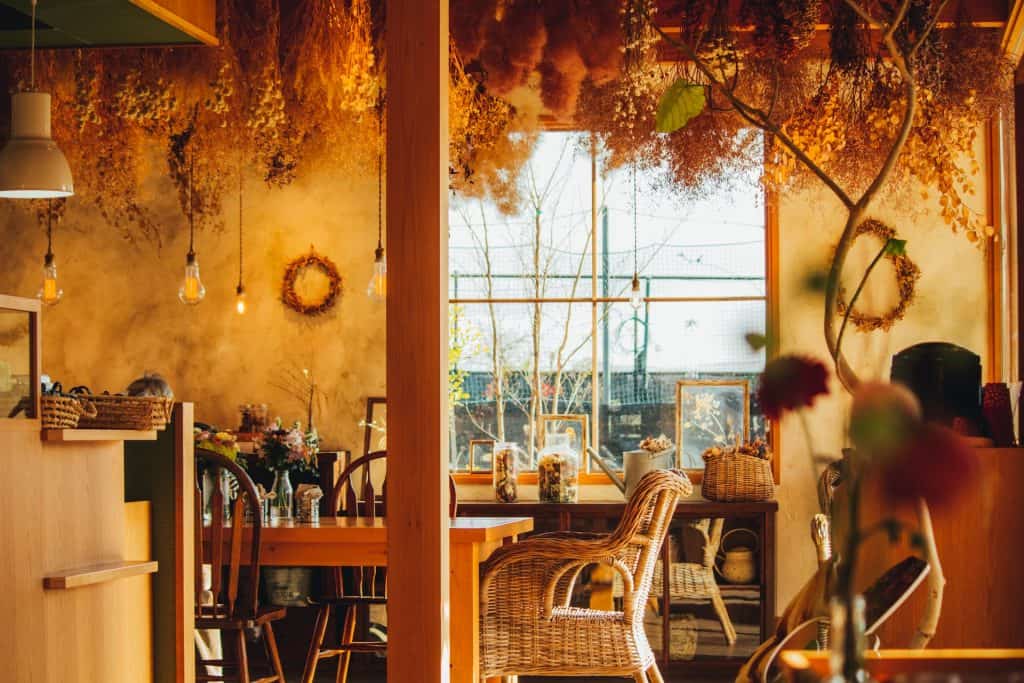
Unlike the many other countries I’ve visited, people in Japan seem to go out of their way to create incredibly immersive experiences in even the smallest of spaces. It’s hard to explain until you experience it for yourself, but Japan just has a way of making every area engaging.
You’ve got the slightly over-the-top things like cat cafes and maid cafes, but also just the more refined seating areas or open spaces. All of them offer a way for people to escape their everyday lives and explore something new.
In addition, there are also loads of themed spaces that range from video game arcades to manga cafes. All of these are designed to create an atmosphere of escapism and fun, perhaps because most people work long hours in Japan, or perhaps just to keep people as happy as possible.
The Role of Tourism and Media
Finally, and perhaps most importantly, we need to talk about the media. If it’s going to get clicks and views, they’ll probably write about it. We’ve talked a lot about how Japan is potentially different to a lot of countries and cultures across the world, and that’s more than enough for the media to run a story claiming it as some far-flung alien-like place.
How media representations contribute to Japan’s image
The way Japan is portrayed in the media has a huge influence on how people perceive it, myself included before I moved here. From Hollywood movies to travel blogs, these mediums often present Japan as an exotic and fascinating destination that is “different” from other countries.
While there are some elements of truth to these narratives, they don’t always represent the entirety of Japanese culture; instead, they often focus on the most eccentric and unique aspects of Japanese society. Once again, they do it to get ‘clicks’ or ‘views’.
As a result, people come to Japan expecting to find something “weird” or “strange.” While it’s true that there are some interesting subcultures and trends in Japan, these shouldn’t be seen as the defining characteristics of the nation.
Japan is just a damn cool place to come!




